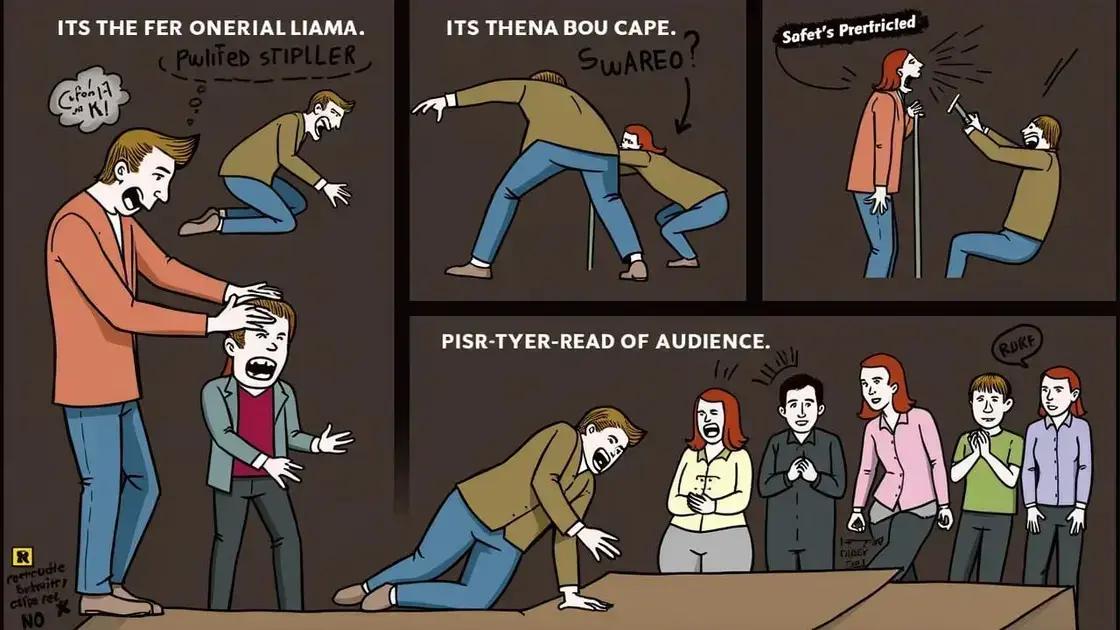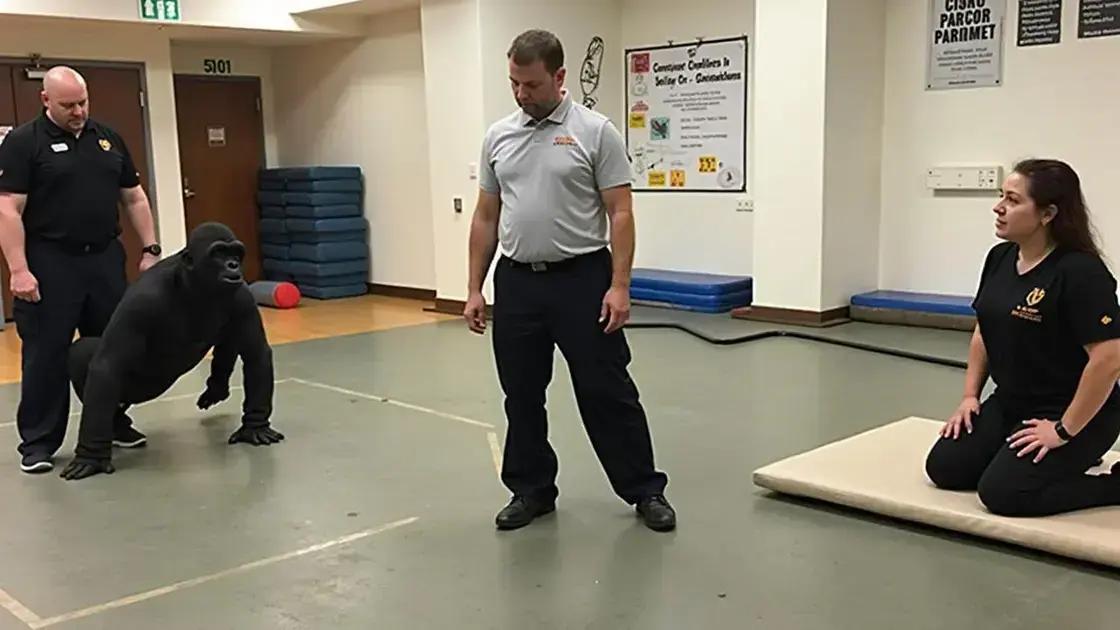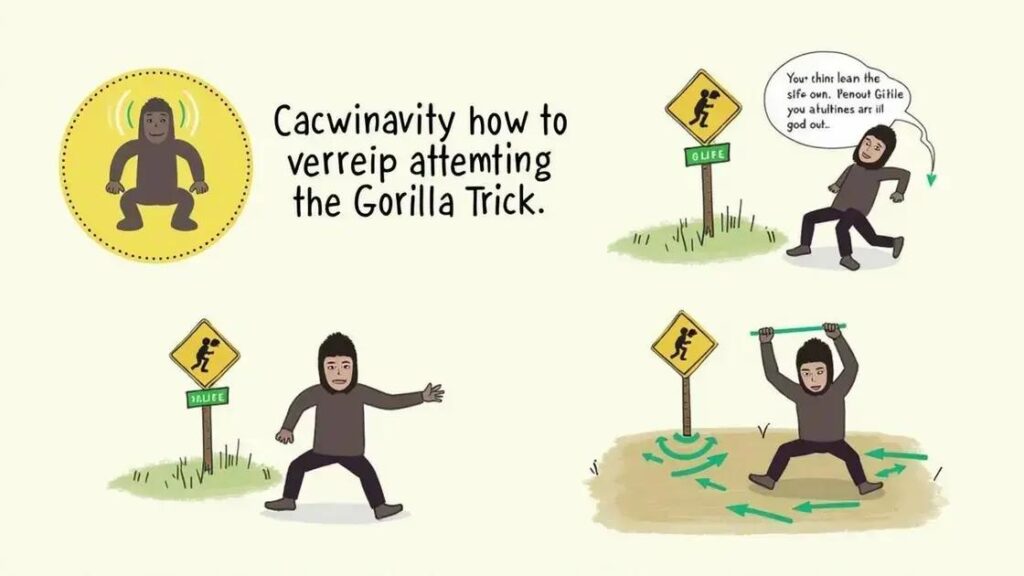Discover the potential risks of the Gorilla Trick and learn how to mitigate them safely through regular practice, proper safety gear, and professional guidance for an exciting and secure performance experience.
The question “Are there risks with the Gorilla Trick?” sparks curiosity and concern among enthusiasts. The Gorilla Trick, while intriguing, comes with its own set of risks that users need to be aware of. In this article, we will dive into what the Gorilla Trick entails, discuss potential hazards, and offer advice on how to safely engage in this practice. Understanding the implications is crucial for both safety and enjoyment.
Understanding the Gorilla Trick

The Gorilla Trick is a popular technique often discussed in various communities. It involves specific methods and practices that can produce impressive outcomes. To fully appreciate the Gorilla Trick, we must first examine its fundamentals.
What is the Gorilla Trick?
The Gorilla Trick typically refers to a strategy in performing arts or magic tricks, where the performer captivates the audience with unexpected moves. This technique can create a sense of wonder and surprise, demanding attention and skill.
The Psychology Behind the Trick
Understanding the psychology of spectators is essential when using the Gorilla Trick. Audiences respond to illusions that challenge their expectations. By manipulating attention, performers can make the impossible seem possible. This psychological component is a vital aspect of the trick.
The Mechanics of the Trick
Effective execution of the Gorilla Trick requires practice and skill. Performers must master technique, timing, and presentation. Each element contributes to the trick’s success. Anyone interested should break down each component, practicing repeatedly until proficient.
It’s essential to grasp the intellectual and practical elements surrounding the trick. This understanding not only enriches the experience but also enhances the performance quality. As we delve deeper, we will address potential risks involved with the Gorilla Trick in the next section.
Potential Risks Involved

While the Gorilla Trick can be fascinating, it is vital to understand the potential risks involved. Engaging in this practice without awareness can lead to various issues.
Physical Risks
One immediate concern is the physical risk of performing the trick incorrectly. For instance, if a performer misjudges their movements, they could injure themselves or others. Falls and mishaps are possible if one is not fully trained.
Emotional Risks
The emotional risks cannot be overlooked either. Depending on how the audience perceives the performance, a poorly executed trick might lead to embarrassment for the performer. This could affect their confidence and willingness to perform again.
Reputational Risks
There are also reputational risks tied to the Gorilla Trick. If a performer regularly fails at this trick, it might damage their credibility in the performing community. To build a successful career, consistency is key.
Thus, while the Gorilla Trick can bring excitement, awareness of these risks is essential for safety and performance quality. Next, we will discuss how to mitigate these risks effectively.
How to Mitigate Risks Safely

To engage in the Gorilla Trick safely, it is crucial to take specific precautions. By following these methods, performers can reduce risks significantly.
Practice Regularly
One fundamental way to mitigate risks is by practicing regularly. The more familiar a performer becomes with the trick, the less likely they will make mistakes. Set aside time each week to rehearse different aspects of the performance.
Use Safety Gear
Incorporating safety gear can prevent injuries. For instance, wearing padded clothing can offer protection during physical performances. Additionally, using mats or cushions for practice will help soften falls or slips.
Seek Professional Guidance
Working with a mentor or taking classes can greatly enhance safety. A professional guide can provide essential tips and feedback, helping to refine the technique while addressing safety concerns.
By practicing consistently, using the right gear, and seeking expert advice, performers can enjoy the thrill of the Gorilla Trick while minimizing potential dangers. Next, we explored what risks are associated with this fascinating practice.
In Summary: Navigating the Gorilla Trick Safely
Engaging with the Gorilla Trick can be an exciting experience, but understanding the associated risks is crucial. By practicing regularly, using appropriate safety gear, and seeking professional guidance, performers can mitigate potential hazards effectively.
Emphasizing safety not only enhances the experience but also builds confidence, allowing performers to captivate their audience without undue risk. The thrill of performing the Gorilla Trick is within reach when approached knowledgeably and responsibly.
Ultimately, embracing the tricks of this art form allows for the exploration of creativity while remaining mindful of safety, ensuring a rewarding and memorable performance.
FAQ – Frequently Asked Questions about the Gorilla Trick
What is the Gorilla Trick?
The Gorilla Trick is a performance technique that captivates audiences with unexpected moves, creating a sense of wonder and surprise.
What are the potential risks of performing the Gorilla Trick?
Risks include physical injuries, emotional embarrassment from poor execution, and potential damage to a performer’s reputation if they frequently fail.
How can I practice the Gorilla Trick safely?
Practicing regularly, using safety gear, and seeking professional guidance are crucial steps to ensure safety while performing the trick.
Why is understanding the audience’s psychology important?
Understanding audience psychology helps performers manipulate attention and expectations, enhancing the overall impact of the performance.
Can anyone perform the Gorilla Trick?
Yes, with dedication and practice, anyone can learn to perform the Gorilla Trick safely and effectively.
How do I find a mentor for learning the Gorilla Trick?
Look for classes, workshops, or local performance groups where experienced performers can provide guidance and feedback.












